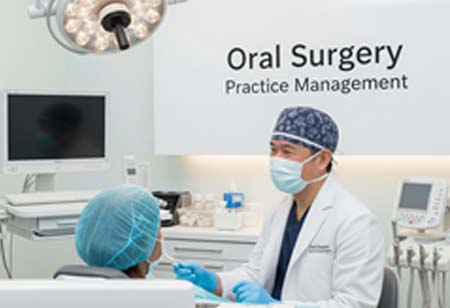Thank you for Subscribing to Healthcare Business Review Weekly Brief
Be first to read the latest tech news, Industry Leader's Insights, and CIO interviews of medium and large enterprises exclusively from Healthcare Business Review
Innovations and Ethics: The Future of Plastic Surgery in the APAC Region
The APAC plastic surgery market is experiencing significant growth, driven by advancements in technology, increasing cultural acceptance, and evolving beauty standards, despite regulatory challenges.

By
Healthcare Business Review | Friday, October 31, 2025
Stay ahead of the industry with exclusive feature stories on the top companies, expert insights and the latest news delivered straight to your inbox. Subscribe today.
The Asia-Pacific (APAC) region has emerged as a global leader in the plastic surgery industry, attracting patients from around the world who seek cosmetic enhancements. With a blend of advanced medical technology, skilled practitioners, and an increasing cultural acceptance of beauty procedures, the market is rapidly evolving.
In recent years, there has been a notable increase in the demand for cosmetic surgery in APAC countries, particularly in South Korea, Japan, and Thailand. According to the researchers, cosmetic procedures have become one of the most frequently requested surgical interventions, driven by an accelerated cultural shift toward beauty and self-improvement.
Social media platforms have played a significant role in this transformation, where beauty standards are prominently showcased and often idolized. South Korea has emerged as a leader in the field of plastic surgery, with a staggering number of procedures conducted annually. The country is renowned for its minimally invasive techniques, advanced technology, and a highly skilled workforce.
The increasing normalization of these procedures within everyday life, as well as the influence of K-pop and Korean dramas, has further encouraged young people to seek cosmetic enhancements to achieve their idealized visions of beauty.
Meanwhile, other APAC nations, such as Thailand and Japan, are increasingly embracing these trends, attracting both local and international patients. Thailand has established itself as a medical tourism hub, offering affordable and high-quality plastic surgery options. As societal perceptions around beauty continue to evolve, it is clear that the demand for plastic surgery is here to stay.
Technological Advancements and New Techniques
Technological advancement has been a significant catalyst for the growth of the plastic surgery industry in the APAC region. Surgeons are now equipped with innovative tools, including 3D imaging, robotic-assisted surgery, and advanced laser technology, which improve the precision and safety of procedures.
These advancements are enabling more minimally invasive techniques, leading to shorter recovery times and reduced discomfort for patients. For instance, in South Korea, the introduction of virtual reality (VR) technology enables patients to preview their post-surgery appearance, helping to manage expectations and enhance patient satisfaction. Similarly, advancements in fat grafting and stem cell therapies are generating interest, as they promise more natural-looking results and improved recovery times.
The integration of artificial intelligence (AI) is set to revolutionize plastic surgery. AI can assist in pre-operative planning, optimize surgical techniques, and predict patient outcomes based on a variety of data points. As these technologies continue to evolve, they will undoubtedly contribute to the further growth and expansion of the industry across the region.
Regulatory Landscape and Ethical Considerations
Despite the booming growth of the plastic surgery sector in the APAC region, it is not without its challenges. The regulatory landscape surrounding plastic surgery varies significantly across countries, resulting in inconsistencies in practice standards, surgical outcomes, and patient safety. For example, while countries like Japan and South Korea have stringent regulations in place to ensure the qualification and training of surgeons, others struggle with oversight and enforcement.
The prevalence of unregulated clinics and practitioners raises concerns about the safety and ethical standards of the industry. The rise of medical tourism, while beneficial in many ways, has also led to patients seeking procedures in less-regulated environments without thorough research. This can result in adverse outcomes and complications, which may tarnish the reputation of the broader industry.
As the industry evolves, there is a growing recognition of the need for better regulation and professional standards across the APAC region. Initiatives aimed at establishing best practices and ethical guidelines are gaining traction, with medical associations advocating for higher training standards and patient awareness campaigns. Addressing these challenges is crucial for ensuring patient safety and maintaining the integrity of the plastic surgery profession.
Future Outlook: Growth and Opportunities
Looking ahead, the plastic surgery industry in APAC is on an upward trajectory, driven by the increasing acceptance of cosmetic procedures and continuous technological innovations. Predictions suggest that the market will continue to expand, with a broader range of procedures becoming available and improved accessibility for patients. Additionally, the demographic landscape within APAC is shifting. As populations age, there is likely to be an increased demand for procedures that cater to the needs of older adults seeking rejuvenation and anti-aging treatments.
The rise of men seeking cosmetic enhancements is another notable trend; procedures such as rhinoplasty and gynecomastia surgery have seen a surge in interest among male patients within the region. As global beauty standards continue to diversify, there is an opportunity for local practitioners to innovate and tailor their offerings to meet the specific aesthetic desires of diverse populations. This flexibility may allow APAC countries to cater to both local and international patients, further bolstering their position in the global cosmetic surgery market.
The state of the plastic surgery industry in APAC is vibrant and evolving, characterized by rising demand, technological advancements, and an ever-changing cultural landscape. While challenges exist, they present opportunities for growth and improvement, positioning the region as a hub for cosmetic innovation and patient care. As the industry advances, ongoing dialogue about safety, ethics, and regulation will be crucial to ensuring a sustainable and responsible future.






